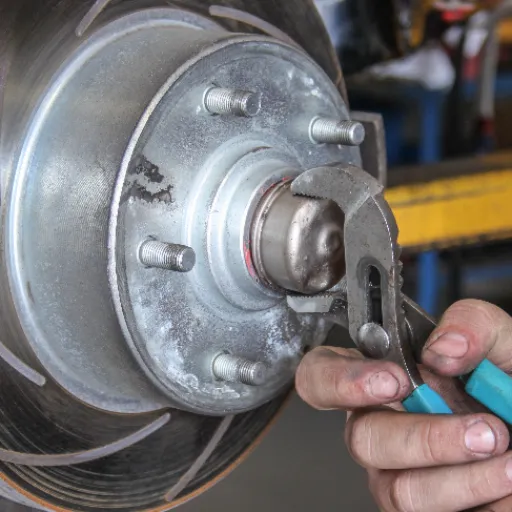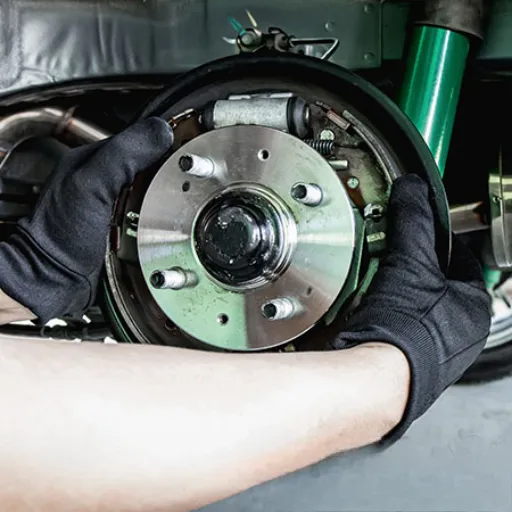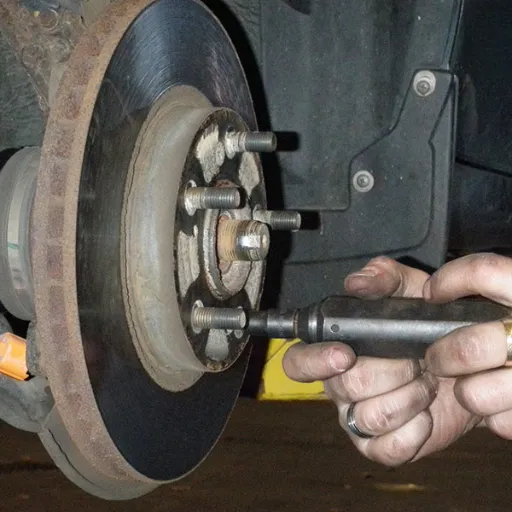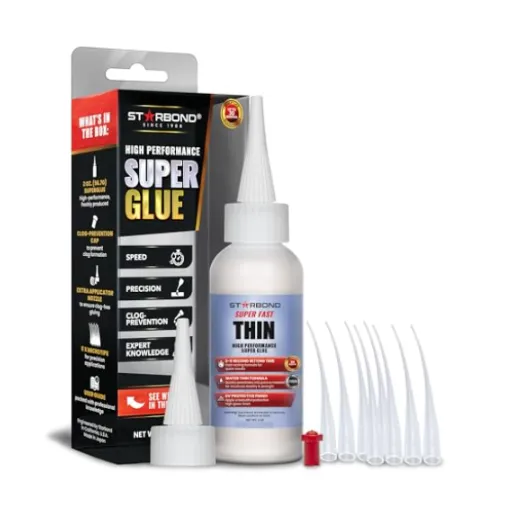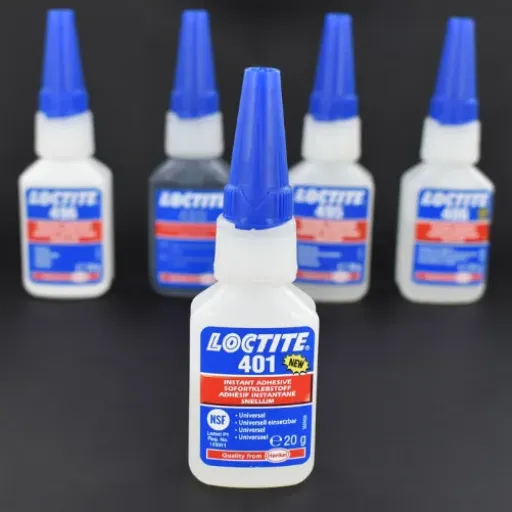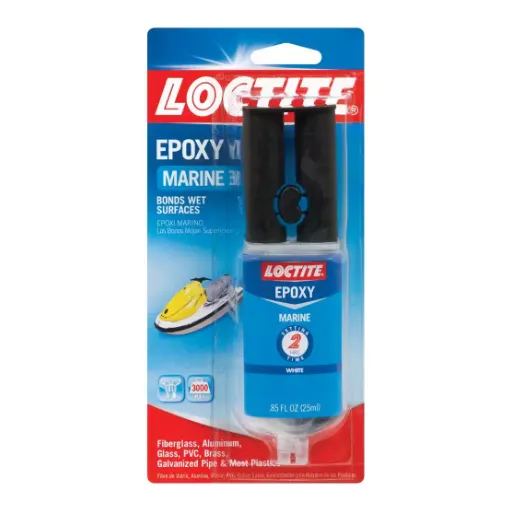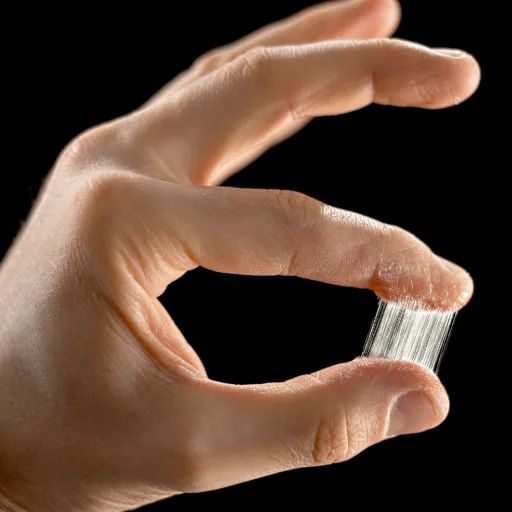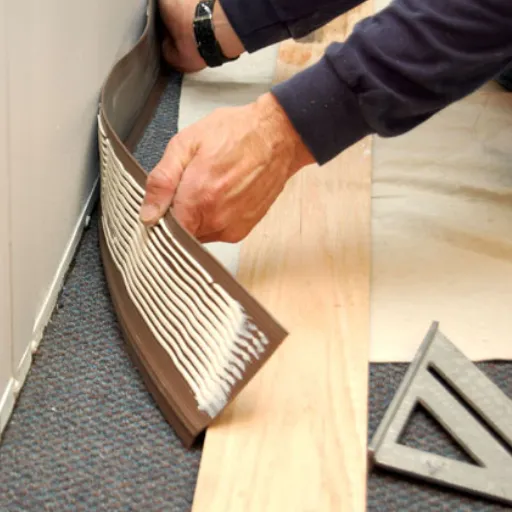Working with PLA is the most thrilling and creative experience in 3D printing. So, how do you join two parts? Whether you are fixing a multi-piece unit, repairing a break, or even embellishing your designs, an adhesive for PLA is important. Not all glues are good for this versatile material; hence, understanding the best options can save you wasting time, frustration, and will yield a lasting outcome. We will discuss the best glue solutions for PLA and provide some ideas on how to make the glue bonds really strong yet invisible. From super glues to specialized adhesives, let’s find the right option for your 3D printing!
Types of Adhesives for Gluing PLA
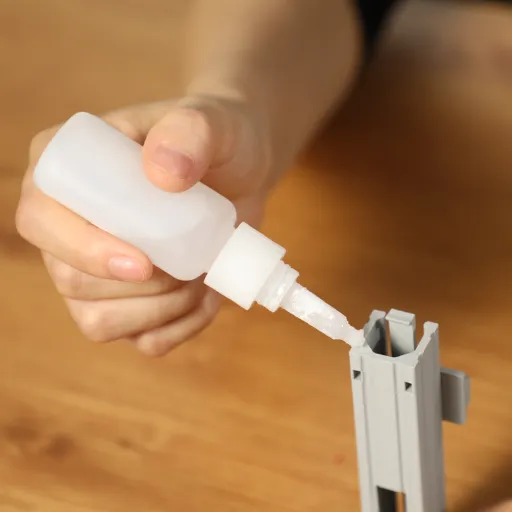
Super Glue: Overview and Types
Super glue or cyanoacrylate glue forms an incredible adhesive for PLA. It sets very fast and forms a reliable bond for various 3D printing applications. Super glue, when applied to PLA, forms a very sturdy bond useful for very small objects, intricate details, or repairs where precision is important.
There are thin, medium, and thick variants of cyanoacrylate glue. In a thin type, super glue creates an instant bond for tightly matching surfaces with small items or seams that align perfectly. On the contrary, medium and thick types can fill very fine gaps between parts for better utility when not a perfect fit. These thicker types allow a bit more working time to properly make adjustments before the glue sets.
Applying super glue effectively to PLA requires thorough surface preparation. The PLA part must be cleaned off grease, oils, or residues to ensure a stronger bond. Slightly sanding the surfaces to be joined may also help the bonds as it furnishes the glue with texture to hold onto. While super glue works excellently under almost all circumstances, ambient heat-mild moisture conditions will weaken it, so it cannot facilitate PLA projects considered heavy-duty or outdoor.
Comparing Super Glue and Epoxy for PLA
| Aspect | Super Glue | Epoxy |
|---|---|---|
| Application Speed | Instant adhesive | Longer working time |
| Best Use | Light fixes, small PLA pieces | Heavy-duty, outdoor projects |
| Durability | Fails under heat, moisture, stress | Weather-resistant, stronger bond |
| Mixing Required | No | Yes (resin + hardener) |
Comparing super glue and epoxy turns to considerations of the needs of your project. Super glue is an instant adhesive and can provide mundane application fixes well enough generally; it is best suited for a lighter kind of use. It does fine when working on a small PLA piece or an assembly of the least effort. However, it is not expected to stand for some structural application, or simply one where heat, moisture, or a little stress is being applied-the super glue will fail in any such scenario.
Epoxy, however, is more suited for light-duty or outdoor PLA projects requiring strength and bonding power. An epoxy has to be mixed from two parts – resin and hardener – which gives a longer working time to position the parts. Once cured, it produces a solid, weather-resistant bond capable of standing greater stresses and environmental variations. For applications which were to crime carpet… epoxy is the choice with permanence and resilience.
Super glue or epoxy will thus be selected based on what you intend to do with your PLA part. For instant light fixes, super glue works fine. For more demanding applications where strength and resistance to environment are required, epoxy is the only great choice. Always carefully consider what your project will be subjected to in terms of heat, moisture, and stress.
Alternative Adhesives: Pros and Cons
Polyurethane Glue
Pros: Versatile, bonds with various materials, expands to fill gaps
Cons: Requires moisture to activate, long cure times
Cyanoacrylate Gel
Pros: Thicker consistency, good for vertical surfaces, precise application
Cons: Not suitable for high-stress or outdoor situations
Silicone Adhesives
Pros: Flexible bond, waterproof, weather-resistant
Cons: Long curing time, poor adhesion to some plastics
In the category of super glue and epoxy alternatives, a wide array of adhesives are capable of catering to varied needs. One choice is polyurethane glue, which is highly versatile and bonds in a very good manner with almost any material, from plastic to wood and metal. Its major advantage is its ability to expand as it cures, filling gaps. However, it requires some moisture to activate, and the cure times may prove long, which could be a disadvantage where faster fixes are required.
Cyanoacrylate gel glues are yet another alternative. They resemble super glues but are formulated as a thicker gel. They prove useful for vertical surfaces, the times where dispensation of glue ought to be in place, and precision is desired. This glue may not sufficiently last for high-stress or outdoor situations, though.
For flexible materials, silicone adhesives would provide a strong bond with elasticity, so flexible materials are used in applications requiring movement and temperature variations. Besides this, silicone is waterproof and weather-resistant and hence can be used outdoors. One downside is that these materials usually take a longer time for curing and might not adhere effectively to some non-porous materials like a few plastics. When considering an alternate adhesive, always take the particulars of your situation into account: material compatibility, environmental exposure, and structural demands of the bond.
Effectiveness of Super Glue on PLA
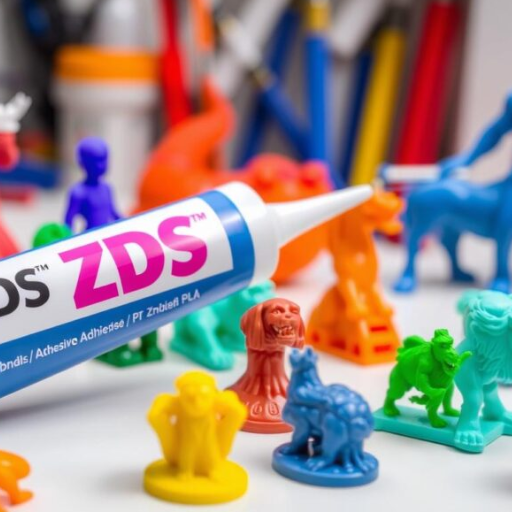
How Super Glue Works on PLA
Since Super Glue mixes chemically with the surface of all sorts of materials to create a very strong adhesion, it will also work well on PLA.
PLA is a thermoplastic from renewable sources, and the slightly porous surface makes for a good adhesion when super glue is applied. Cyanoacrylate super glue reacts with the moisture in the air and the moisture on the surface of PLA to quickly develop a strong bond.
The surface must be clean and free of dust, grease, or oils for the best bonding before gluing. Also, very light sanding of the bonding area can help by increasing surface texture. Put on just a thin layer of glue on one piece, press the two pieces together, and firmly hold for several seconds to ensure bonding. The glue will set fast, but do allow for curing time to reach maximum strength.
While super glue might be convenient and effective for small or non-structural type jobs with PLA, it cannot possibly be the optimal choice for load-bearing joints that are subjected to stresses, since it is brittle. For such applications, use adhesives that are made to provide stronger, more durable bonds. Always evaluate the requirements of your project before choosing the adhesive to use.
Testing Different Super Glue Variants
While testing the performance of various super glue variants with PLA, the aim should be to test them against different types of stresses and environmental factors. Take small, controlled PLA samples onto which you will apply adhesives and test the bonding strength under direct tension as well as shear forces. Any observations about the brittleness, or how well it holds with slight flexing, should also be noted, for PLA frequently faces slight flexing in everyday applications. This will give a greater understanding of which variant performs better in terms of mechanical strength.
Environmental factors are another critical area for testing. The glued samples should be subjected to varied temperatures, suction humidity, and even freshwater. Certain superglue variants might withstand temperature extremes and moisture better than others, and failing of someglues at temperature extremes can give an idea in selecting the appropriate glue for different environmental conditions your projects might be put through.
Finally, do consider the curing times and other application processes. Some glue formulations may take a longer time to cure before reaching their peak strength, while others bond in a matter of seconds. Another factor that should be observed is whether the glue spreads easily and provides a nice thin coat without leaving any big impressions on the PLA surface. So, if you test everything thoroughly, you can make sure to choose the most reliable super glue version for your application.
Performance on Various PLA Types
With various types of PLA, the super glue performance diverges as per the particular formulation of the PLA material and the super glue being employed. Generally speaking, standard PLA does well with the super glue bonding-it has a slightly porous surface so that the super glue can penetrate it and develop a strong bond. Things change with a very smooth or polished surface-it may require sanding to ensure better grip for the adhesive.
The PLA-type blends, including those mixed with materials like wood fibers or metals, behave variably in bonding. Such additives may alter the surface texture and composition, which in turn could affect glue adhesion. Therefore, testing a piece of the blended PLA with the glue is recommended to ascertain the bond strength against the intended application.
Environmental factors, such as temperature and humidity, are also needs consideration, as they can in turn influence glue performance between types of PLA. Some require a fair amount of heat resistance, making them a poor choice for PLA objects facing higher temperatures. Testing with conditions similar to those in the practical application would provide the most reliable result. At least with these considerations, one can ensure the best bonding performance under a wide variety of PLA materials.
Step-by-Step Guide to Gluing PLA Prints
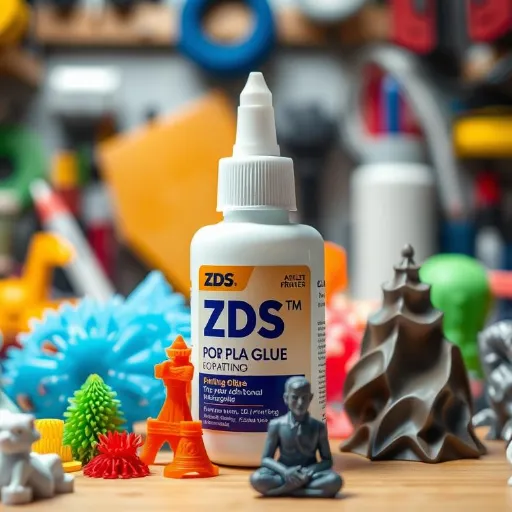
Surface Preparation for Maximum Adhesion
- Clean thoroughly: Remove traces of dust, oil, or residue. Wipe down your prospective bonding area with a cloth dampened with isopropyl alcohol so that both surfaces are left clean and ready for glue. Try not to touch the areas with your hands afterward because it could contaminate them.
- Light sanding: Go ahead and lightly sand the surfaces of your parts to create texture with a fine-grit paper. PLA generally comes with a smooth texture, and adhesives tend to find it hard to hold; sanding textures the surface for better adherence. Sand in one direction until the surface is uniformly matte, then take away the dust with a clean cloth.
- Ensure proper alignment: Make sure the surface is dry and properly aligned prior to applying the glue. They can be clamped or weighted, if need be, to hold the pieces together during curing so the bond is even throughout.
This kind of preparation really diminishes the possibility of a weak bond and increases the overall sturdiness of the glued PLA parts. Following one after the other, these steps will guarantee a solid and sturdy join for PLA projects.
Application Techniques for Super Glue
Critical Application Steps:
- Surface preparation: Cleaning the surfaces you intend to join must be the very first step. This is an important process because dirt, grease, or any form of residue considerably hinders the working ability of the glue to properly join two surfaces. Use a lint-free cloth; apply an alcohol-based cleaner to wipe away any traces of contaminants.
- Proper application: Apply it very sparingly. One small, even coating is usually enough, as excessive amounts may lead to uneven bonding or take longer to set. Just enough glue should be applied to cover the contact surface in order to prevent any spilling.
- Curing process: Immediately after application, combine the surfaces, pressing them firmly together, and hold them until the glue has set according to the instructions. If possible, clamp the pieces to ensure the best bond formation and even distribution.
Lastly, let the glue cure depending on what the instructions state. This curing time may be altered by humidity, temperature, and the kind of material being bonded. Try not to move or place any stress on the bond for the duration of the curing. If all of these instructions are observed, your application of super glue should give you a bond that is dependable and lasting.
Using Accelerators for Faster Curing
Accelerators are sometimes utilized in order to expedite curing time for super glues, especially in projects where fast results are anticipated. To use an accelerator, ensure that the surfaces you wish to bond are clean and properly aligned. With one surface, apply the glue; with the other, apply the accelerator spray or a thin layer of the accelerator on top of the glue, as directed by the product. Upon application of the accelerator, the two surfaces need immediate adhesion because curing takes place almost instantly. Other situations requiring an accelerator include working with materials that ordinarily take a long time to set up or those with conditions that discourage cure, such as low humidity.
Since they are efficient, accelerators are to be used sparingly so as not to weaken the bond or cause a brittle finish. Accelerators are quick to set small repairs or projects for immediate results and may not be required for daily use. Check that the accelerator is compatible with the materials you are working on, and make sure to follow any safety precautions mentioned by the manufacturer.
Safety Precautions When Using Adhesives
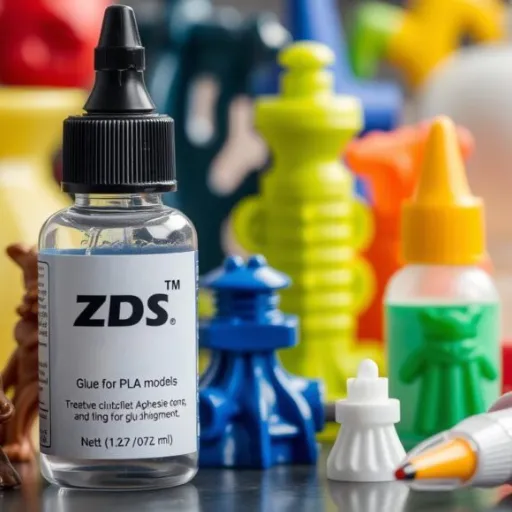
Handling Super Glue Safely
⚠️ Important Safety Guidelines:
- Always use in a well-ventilated atmosphere to avoid inhaling fumes
- Wear disposable gloves or apply barrier cream for skin protection
- Keep away from eyes and mouth to prevent accidental injury
- Use application aids like brushes or nozzles for precise application
- Store in cool, dry place, locked from children and pets
- Keep cap tightly closed to prevent leakage or drying
Super glue is an extremely powerful adhesive that calls for extreme caution during its use. To begin with, it should always be used in a well-ventilated atmosphere so as not to inhale any fumes that may irritate the eyes, nose, and throat. Protecting the skin would be an ideal precaution, so wear disposable gloves or apply a barrier cream-whether not-wearing any protection, superglue bonds very rapidly to skin. Also, keep it away from your eyes or mouth; this will prevent any accidental injury.
Do not put in too much super glue on purpose since it can cause several spills or annoyingly make surfaces stick together. Consider using application aids, like an applicator brush or nozzles, to put the adhesive exactly where needed. In case of gluing together of fingers or skin, do not panic-hold the glued area under warm soapy water, and it will slowly release; less commonly, you can use a debonding agent such as acetone, but use only as directed and with caution, since it may cause skin irritation.
Now, store the super glue in a cool, dry place, locked from children and pets. Keep the cap on tightly so that no leakage or drying out occurs. Also be sure to read the cautions given by the manufacturer for added safety, and dispose of any glue which you will not use in an environmentally conscious manner.
Ventilation and Protection During Application
Super glue application should always warrant great ventilation so as not to allow the fumes to enter and disparage your being in any form. The working conditions should allow for a great deal of ventilation, so a room with open windows would be suitable, or any exhaust type of fan that could suck out the fumes from within. Mother Nature provides her working domain as well; so, if it’s a good day, perform your art outside. One should not prefer to see working in closed, lesser-ventilated places; the chances of fumes concentrating may somehow pose health hazards.
During application, protection is provided for accidental free flow of glue into the eyes, onto the skin, or onto clothing. Use of disposable gloves for protecting hands is extremely recommended, and, if possible, one should consider safety goggles to protect the eyes from splashes or hazardous fumes. Never forcefully peel off the glue from the skin; rather remove it with safe methods, i.e., soaking the affected area in warm soapy water.
Be sure also to consider the surfaces you work on. Lay down a disposable lining, paper or a non-porous sheet, for drips and drops. Take time to apply the glue so that there are no spills and that everything is done in the safest manner. One ought to remember these rules for a smooth and worry-free application of super glue.
First Aid for Adhesive Accidents
🚨 Emergency Response Steps:
Skin Contact:
Soak in warm soapy water. Use oil-based substances like cooking oil if resistant. Do not pull apart forcibly.
Eye Contact:
Immediately flush with lukewarm water. Keep eyes open, don’t rub. Seek medical attention promptly.
Mouth/Sensitive Areas:
Rinse with warm water. Do not attempt to pull apart. Seek healthcare professional assistance immediately.
In the event of an adhesive-related incident, time is of the essence; calmness comes first. First analyze whether it is of a serious nature. When adhesive comes in contact with the skin, do not try to pull apart the joined areas forcibly as this might damage the skin. Instead, soak the affected areas in warm soapy water to soften the glue and gently lift it away. If it resists, use an oil-based substance such as cooking oil or petroleum jelly to help weaken the glue’s hold.
If the adhesive accidentally gets into eyes, those eyes should be washed immediately and thoroughly with lukewarm water. The wash should keep the eyes open; do not rub as this could cause irritation and even greater damage. Get medical attention as soon as possible to determine the extent of injury and prevent long-term damage to the eyes. Eye safety must be attended to immediately because delayed care may pose complications following adhesive exposure.
If between adhesive bonds occur in the mouth or other sensitive areas, wash the glue with warm water and do not attempt to pull the glue apart. A healthcare professional must be sought for assistance and treatment. Accidents with glue should be avoided, but knowing these emergency procedures will minimize the risk to a great extent and smoothly resolve the incident.
Best Practices for Long-Lasting PLA Bonds
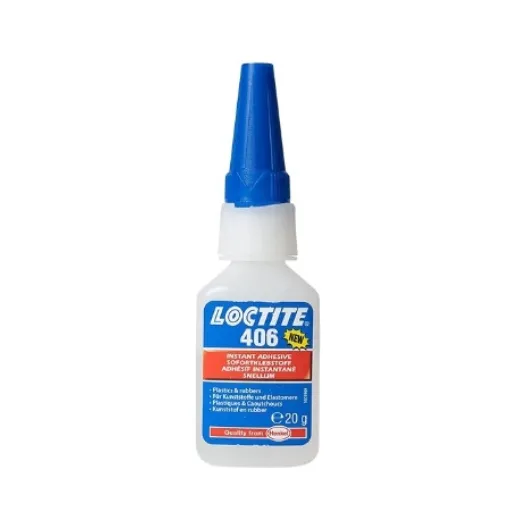
Testing the Strength of Your Bond
- Allow complete curing: Allow the bond to cure completely as per the manufacturer’s suggested instructions. The adhesive must be allowed sufficient time to reach its maximum strength, which will give you an accurate measurement of its strength.
- Gradual testing: Slowly apply weight or pressure to the bonded area. At first, exert slight pressure and gradually increase it until signs of strain or failure occur. Depending on the application, this pressure could mimic actual conditions such as tensile and shear forces.
- Inspect and evaluate: Follow this with inspection of the bond for matrix integrity loss signs of cracking, separation, or uneven stress distribution. Evaluation dictates whether there is a need for adjustment on the bonding process.
For precise measurement, these values can be quantified by weighing, clamping, or using a tensile testing rig. Continuous testing with constant reviewing of those working processes guarantees better results into a long-lasting PLA bonding.
Maintaining and Caring for Glued PLA Parts
Proper maintenance and care of glued PLA parts ensure their lasting strength and structural effectiveness. Begin with keeping the parts in a stable environment where there is no exposure to excessive heat, humidity, or direct sunlight. Being considered heat sensitive, PLA weakens the bonding of the material with adhesives at a higher temperature, which is why you always store your glued parts in a cool, dry area.
Keep a watchful eye for damages or any sign of wear at the bonding sites. Such could mean that minor repairs or reinforcements may be needed to avoid more damage later. Occasionally wipe the parts using a soft damp cloth to keep them clean and free from dust or debris that would be harmful to the bonds.
Don’t unnecessarily allow too much mechanical stress or weight on the glued areas beyond their design. Overloading, misuse, or abuse can degrade the bond and decrease the durability of the part. By incorporating these tips, you can help glue PLA parts last long and remain dependable in service.
When to Consider Reinforcement Techniques
Consider Reinforcement When:
- Parts must withstand high stress, load, or frequent use
- Environmental factors like heat or moisture can weaken PLA or adhesive
- Insufficient glued surface area or bonds are too thin
- Parts are subjected to structural loads or repeat mechanical forces
- Surface contact between parts is not sufficient for effective adhesion
One must consider reinforcement techniques whenever glued PLA parts have to withstand high stress, load, or frequent use. While PLA is versatile and easy to work with, it does have a certain degree of brittleness that can cause it to fail under demanding applications. If the part is to be subjected to structural loads or repeat mechanical forces, the reinforcement must be considered to give the bond more strength and durability.
Another case when reinforcement could be considered is whenever environmental factors such as heat or moisture can weaken the PLA or the adhesive. Since PLA has a relatively low softening temperature, in such cases, it makes sense to have mechanical fasteners or filament welds, or to provide supports in critical areas to ensure that parts hold together under varying environmental conditions. One must assess the intended environment first to determine if reinforcement is necessary to prevent early failure of the parts.
If there is a lack of sufficiently uniform glued surface area or if the bonds are too thin, it may require strengthening otherwise the adhesion strength would be penalized. If surface contact between parts is not sufficient, their adhesive may not be fully effective. Dowels may be embedded; external braces may be added; epoxy may be coated over the joints to form a more secure and lasting attachment despite constrained design. Always choose your reinforcement method according to the specific requirements of your project for the best results.
Frequently Asked Questions (FAQ)
Q: Does super glue work on PLA?
A: Probably better with PLA is super glue, cyanoacrylate glue (CA glue). It will indeed bond PLA pieces very strongly upon correct application.
Q: So what is the best glue for PLA?
A: In most cases, super glue gel or Loctite is the best glue for PLA. These both adhere well and dry quickly, so assembly of 3D printed parts is made easier.
Q: Can I glue PLA with epoxy resin?
A: Yes, epoxy-resin glue effectively glues PLA together. It has great filling properties, and it bonds well with PLA, especially in larger or more complex assemblies.
Q: Does acetone work with PLA for bonding?
A: Acetone when applied to PLA might present a smoother surface for gluing. However, acetone is not a strong adhesive per se; more, it is used to clean surfaces before gluing.
Q: What would be the most suitable glue for 3D printed parts?
A: CA glue, epoxy resin, and certain plastic adhesives like Weld-On 16 are among the better glues for 3D printed parts. Each one has its advantages, depending on a particular use.
Q: How can I enhance the bonding process using super glue?
A: To enhance the bonding process using super glue, make sure the surfaces are clean and dry. Additionally, baking powder may be dusted onto the glued surface, acting to fill gaps and improve bond strength.
Q: Any methods for gluing PLA that allow repositioning?
A: Yes, glue sticks and repositionable adhesives are options for repositioning before they are set. For permanent gluing, however, super gluing or epoxy is preferred.
Q: Can Gorilla glue be used with PLA?
A: Yes, Gorilla glue can be used with PLA, but it expands as it cures, which may not suit all projects. Make sure to apply it carefully so that it does not expand excessively.
Q: How does the viscosity of super glue gel compare to that of ordinary super glue?
A: The super glue gels are higher in viscosity than normal super glue, making them easier to apply. Because it does not run, it is suitable for vertical surfaces.
Q: How am I supposed to learn to glue PLA?
A: Learning to glue PLA entails entering into the realm of adhesives, trying out various working procedures, and possibly taking into account the preparation of the surfaces and binding time.
References
- Why does super glue never work for me on PLA? – A discussion on using super glue gel for PLA and its effectiveness.
- Which Glue for PLA? – General Discussions – Insights from a forum discussing the use of super glue (cyanoacrylate adhesive) for PLA parts.
- How to glue PLA: Tips and techniques for 3D printing projects – A guide recommending high-quality super glue for bonding PLA.
- Testing the Best Glue for PLA 3D Printed Parts – A detailed test of various adhesives for PLA, including super glue.
- What is the absolute strongest way to glue PLA parts together – A discussion on techniques for achieving strong bonds with PLA, including the use of super glue.







